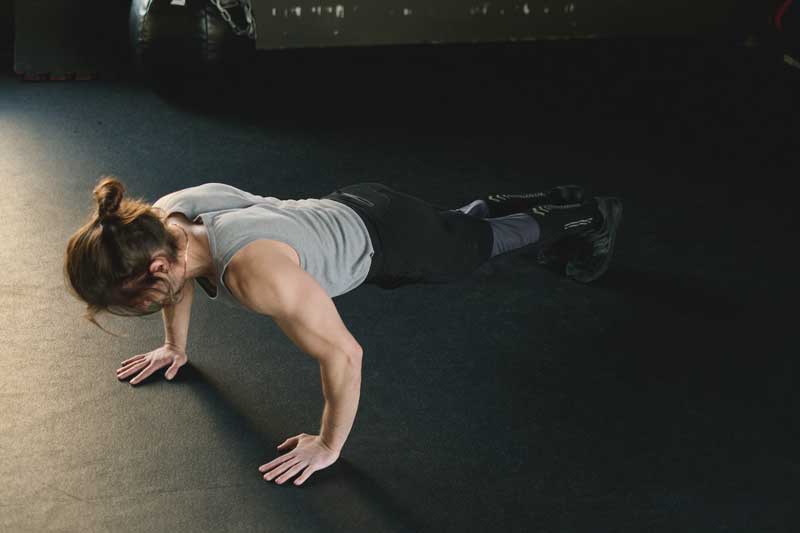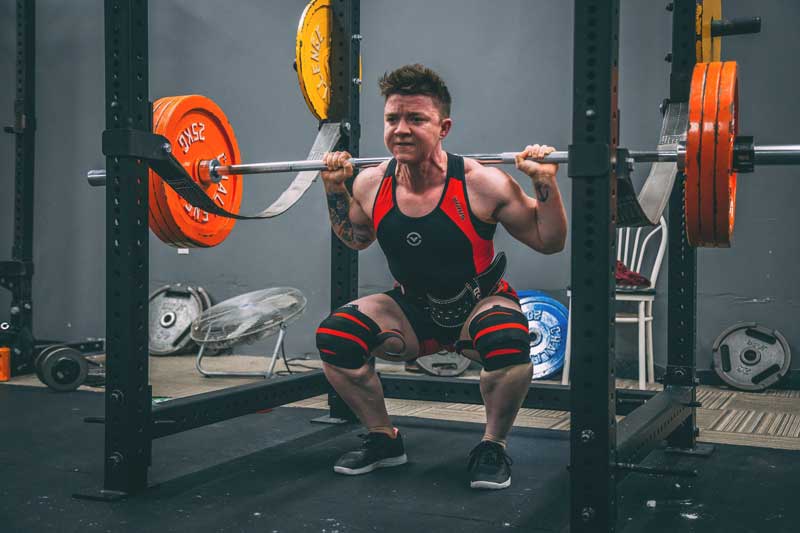Looking for a workout split that helps you best for your routine and that helps build muscle and strength? The Push Pull Leg (PPL) split is a popular workout routine worth considering. This article will provide you with a comprehensive understanding of what the PPL split entails and how you can implement it into your fitness routine effectively.
Introduction
In the world of fitness, finding the right workout routine can make a significant difference in achieving your goals.
The Push Pull Leg split is a training methodology that divides your workouts into three primary categories: push, pull, and leg days.
By structuring your training in this manner, you can target different muscle groups and optimize your progress.
Understanding the Push Pull Leg (PPL) Split
What is a PPL split?
A Push Pull Leg split is a workout split that involves dividing your workouts into three distinct categories based on the movement patterns involved. It is also based on which muscle groups work in the same manner and movement.
On the push day, you focus on exercises that primarily involve pushing movements, such as chest presses and shoulder presses. The movement mimics as if you are pushing something.
The pull day is dedicated to exercises that involve pulling movements, such as pull-ups and rows. The movement mimics as if you are pulling something.
Finally, the leg day targets your lower body muscles, including exercises like squats and lunges.
Benefits of a PPL split routine
The PPL split offers several advantages that make it an appealing option for many fitness enthusiasts.
Firstly, it allows for balanced muscle development by targeting different muscle groups on separate training days.
This approach also provides sufficient time for recovery, as each muscle group is given ample rest between workouts.
Additionally, the PPL split routine allows for flexibility in scheduling and provides opportunities for high training frequency.
The Push Day

The push day focuses on exercises that involve pushing movements, primarily targeting the muscles of the chest, shoulders, triceps and forearms.
By incorporating a variety of exercises, you can engage multiple muscle groups simultaneously.
Some Exercises for the Push Day
- Barbell bench press
- Dumbbell shoulder press
- Incline dumbbell press
- Tricep dips
- Push-ups
Sample push day routine
| Workout | Sets x Reps | |
| 1. | Barbell bench press | 3 x (8-10) |
| 2. | Dumbbell shoulder press | 3 x (8-10) |
| 3. | Incline dumbbell press | 3 x (8-10) |
| 4. | Tricep dips | 3 x (12-15) |
| 5. | Push-ups | 3 x (till failure) |
Give 1-2 minutes of rest as a beginner in between sets, 30 seconds to 1 minute for an advanced member.
The Pull Day

The pull day primarily targets the muscles of the back, biceps, and rear deltoids.
By incorporating exercises that involve pulling movements, you can effectively engage these muscle groups.
Exercises for the pull day
- Pull-ups
- Barbell rows
- Lat pulldowns
- Dumbbell curls
- Face pulls
Sample pull day routine
| Workout | Sets x Reps | |
| 1. | Pull-ups | 3 x (till failure) |
| 2. | Barbell rows | 3 x (8-10) |
| 3. | Lat pulldowns | 3 x (10-12) |
| 4. | Dumbbell curls | 3 x (10-12) |
| 5. | Face pulls | 3 x (12-15) |
Give 1-2 minutes of rest as a beginner in between sets, 30 seconds to 1 minute for an advanced member.
You might also wanna check out:
Pull Day Workout Routine for a Beginner
The Leg Day

The leg day focuses on developing strength and muscle in the lower body.
It includes exercises that target the quadriceps, hamstrings, glutes, and calves.
Exercises for the leg day
- Squats
- Romanian deadlifts
- Leg press
- Lunges
- Calf raises
Sample leg day routine
| Workout | Sets x Reps | |
| 1. | Squats | 3 x (8-10) |
| 2. | Romanian deadlifts | 3 x (10-12) |
| 3. | Leg press | 3 x (10-12) |
| 4. | Lunges | 3 x (12-15) |
| 5. | Calf raises | 3 x (12-15) |
Give 1-2 minutes of rest as a beginner in between sets, 30 seconds to 1 minute for an advanced member.
How to structure a Push Pull Leg Split Routine
To structure a PPL split routine effectively, you can follow a 3-day cycle where you alternate between push, pull, and leg days.
This is the best and most common routine for push pull leg split, where you workout for 6 days, targeting each muscle group 2 times a week. This cycle ensures that each muscle group is adequately trained and allows for optimal recovery.
But what if you don’t have time for 6 days to train in a week? There are other alternatives. Let’s look at each one of them.
6 Day/Week Push Pull Leg Split Routine
This is where you are now used to exercising for 6 days and can do it without hindering your health. It is usually recommended for advanced members and not for beginner.
| Day | Week 1 | Week 2 |
| Monday | Push Day | Push Day |
| Tuesday | Pull Day | Pull Day |
| Wednesday | Leg Day | Leg Day |
| Thursday | Push Day | Push Day |
| Friday | Pull Day | Pull Day |
| Saturday | Leg Day | Leg Day |
| Sunday | Rest | Rest |
5 Day/Week Push Pull Leg Split Routine
This is where you have time and energy for 5 days of workout. Best for beginner, intermediate members and advanced members.
| Day | Week 1 | Week 2 | Week 3 |
| Monday | Push Day | Leg Day | Pull Day |
| Tuesday | Pull Day | Push Day | Leg Day |
| Wednesday | Leg Day | Pull Day | Push Day |
| Thursday | Rest | Rest | Rest |
| Friday | Push Day | Leg Day | Pull Day |
| Saturday | Pull Day | Push Day | Leg Day |
| Sunday | Rest | Rest | Rest |
4 Day/Week Push Pull Leg Split Routine
This is where you have time to workout only for 4 days a week. Good for all, especially recommended for busy people and beginners.
| Day | Variation 1 | Variation 2 |
| Monday | Push Day | Push Day |
| Tuesday | Pull Day | Rest |
| Wednesday | Leg Day | Pull Day |
| Thursday | Rest | Rest |
| Friday | Abs and Cardio | Leg Day |
| Saturday | Rest | Abs and Cardio |
| Sunday | Rest | Rest |
Advantages and Disadvantages of Push Pull Leg Split
A. Advantages
- Efficient training of specific muscle groups:
One of the key advantages of the PPL Split routine is its ability to target specific muscle groups effectively. By dedicating separate workout sessions to push, pull, and leg movements, you can prioritize and focus on each muscle group, ensuring thorough development and optimal training stimulus.
This targeted approach can lead to improved muscle symmetry and overall physique balance. - Versatility and customization options:
The PPL Split routine offers a high level of versatility and customization. It allows you to tailor your workouts based on individual preferences, specific goals, and even time constraints.
With a wide range of exercise variations available for each muscle group, you can choose movements that best suit your body and training style. This flexibility makes the PPL Split suitable for individuals at different fitness levels and with diverse objectives. - Opportunity for increased frequency and volume:
Another advantage of the PPL Split routine is the potential for increased training frequency and volume. Since you allocate separate days for push, pull, and leg workouts, you can distribute the workload more evenly across the week.
This allows for higher training frequency, meaning you can work each muscle group multiple times within the training week.
Additionally, the split routine enables you to incorporate more exercises and sets for each muscle group, leading to increased training volume, which can stimulate muscle growth and strength gains.
B. Disadvantages
- May not be suitable for beginners or individuals with limited time: While the PPL Split routine offers numerous benefits, it may not be the most suitable approach for beginners or individuals with limited time available for training. This type of split routine requires a certain level of experience and familiarity with exercises, form, and technique. Beginners may benefit more from full-body workouts or simpler training splits initially, focusing on developing overall strength and conditioning.
Additionally, the PPL Split typically involves dedicating separate days to different muscle groups, which may not be feasible for individuals with busy schedules or time constraints. - Requires proper planning and understanding of exercise selection: To maximize the effectiveness of the PPL Split routine, proper planning and exercise selection are crucial. It’s essential to choose exercises that target the intended muscle groups effectively and ensure balanced development.
This requires a good understanding of exercise biomechanics and the ability to select appropriate variations that suit individual needs and goals. Without proper planning and exercise selection, there’s a risk of imbalances or incomplete development of certain muscle groups, which may hinder progress or increase the risk of injury.
Tips for a successful Push Pull Leg Split Routine
To make the most out of your PPL split routine, consider the following tips:
- Progressive overload: Gradually increase the weights or intensity of your exercises to challenge your muscles.
- Proper form and technique: Focus on maintaining proper form to prevent injuries and maximize muscle activation.
- Recovery and rest days: Allow your body enough time to rest and recover between workouts to avoid overtraining.
- Nutrition and supplementation: Ensure you’re consuming a balanced diet with adequate protein and consider supplements that support your fitness goals.
Common mistakes to avoid with Push Pull Leg Split
While the PPL split routine can be highly effective, it’s important to avoid common mistakes that may hinder your progress. Some mistakes to watch out for include:
- Skipping some muscles exercises
- Neglecting proper warm-up and cool-down routines
- Poor exercise selection or imbalance between muscle groups
- Lack of progressive overload
- Insufficient rest and recovery periods
Is the PPL split suitable for everyone?
The PPL split routine is suitable for all individuals of various fitness levels, but it’s essential to consider your specific goals, preferences, and any potential limitations or injuries you may have.
Best practice is to try it out first and if it suits then keep going with it or if not switch to other form of splits available. Other type of spit includess, bro split, lower-upper body split, full body etc.
Consulting with a fitness professional or personal trainer can help you determine if the PPL split is the right choice for you.
Conclusion
The Push Pull Leg (PPL) split is an effective and versatile workout routine that allows for balanced muscle development and optimal recovery. By dividing your training into push, pull, and leg days, you can target different muscle groups and make progress towards your fitness goals. Remember to focus on progressive overload, proper form, and recovery to maximize your results.
FAQs
1. Can I modify the PPL split routine to fit my schedule?
Absolutely! The PPL split routine offers flexibility, and you can adjust it to suit your schedule. You can spread the workouts across different days or even incorporate additional rest days if needed. Just take case to include all muscles in your routine.
2. How many times a week should I perform the PPL split routine?
Typically, the PPL split routine is performed 3-6 times a week, depending on your fitness level and recovery capacity. Beginners may start with three days a week and gradually increase the frequency as they progress.
3. Can I add cardio exercises to my PPL split routine?
Yes, you can include cardio exercises on your rest days or after your workouts. If you are cutting your fat, it is actually one of the best combination. Just ensure that it doesn’t interfere with your recovery or compromise your strength training sessions.
4. Can I do compound exercises in the PPL split routine?
Absolutely! Compound exercises, such as squats, deadlifts, and bench presses, are highly recommended as they engage multiple muscle groups simultaneously, making your workouts more efficient.
5. How long should each workout session be for the PPL split routine?
The duration of each workout session will depend on factors such as your fitness level, the number of exercises, and rest periods. On average, a PPL split workout can last anywhere from 45 minutes to 90 minutes.





